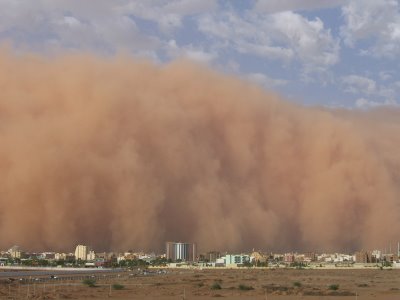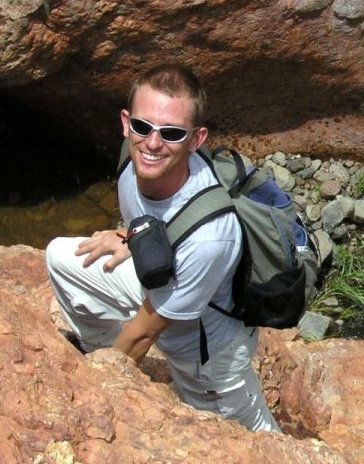When you tell someone on an airplane that you're on your way to work in Sudan, they look at you like you've told them that you're on your way to get chemo. They think of Darfur, where 2 million people are huddled in camps hoping vainly for protection from the raping, pillaging Janjaweed. They imagine I'm on my way to feed starving babies or something else heroic. Of all the places I've been, Sudan elicits the most dread from people who hear that I'm en route.
But like everywhere I've been, the truth is more subtle. First of all, I'm not in Darfur, which is indeed a tragedy of massive proportions that brings shame on the world for allowing it to continue. Darfur is certainly a more difficult and dangerous place to work than where I am in Southern Sudan.
Sudan is complicated. It's the largest country in Africa. Mostly Arab Muslim in the center and north, with Christian and Animist tribes in the west (Darfur) and south. The Southern Sudanese fought a 20 year civil war against the Arab-dominated government. That ended in 2005 with a power sharing deal and a planned referendum on secession in 2012. Now that the war is over, the refugees are returning, perhaps as many as 5 million of them. And that means a massive aid effort to help them get their lives restarted and a UN Peacekeeping Mission to keep an eye on the armies of the south and north. All this is happening over a huge area, 700 miles across with dozens of tribes speaking a variety of languages. Even the main routes are muddy, swampy roads.

This is a city street actually in the town of Juba, the seat of the southern government. I haven't been out on the roads in countryside yet, but they're worse, I hear. But there are lots of projects going on to improve them.

The Juba bridge, one of the few Nile crossings, partially collapsed under the weight of an overloaded truck a couple of weeks ago, hopefully it will be repaired soon.
I'm based in Juba, possibly the future capital of an independent Southern Sudan. There's not much here. A dozen or two run down two-story buildings in the center of town; mostly rough dirt streets (I have seen few 2 wheel drive cars on the streets here). The residential quarters are traditional tukles, round mud huts with thatched roofs.

Downtown Juba.

Juba's suburbs.

One of Juba's churches.

The mosque down the street from the church.

This photo was made by my colleague, Katya. UNICEF has started it's back to school program and they give the kids everything they need as well as giving books, blackboards, and such to the schools.
There's a huge influx of aid money, and things are changing steadily. Roads are being improved; hotels, residences, and ministry buildings are going up.
There are about 350 UN staff in Juba itself at any given moment, most living in camps like the one I'm in. Basically, it's like summer camp. Each resident has a tent, about as big as a small bedroom. A table, a bed, a fan, a mosquito net, and a bare florescent light bulb are provided.

Rise and shine, campers.
Showers and bathrooms are in portable containers in one corner of them camp. The mess hall is an open sided tent where the concessionaire (a Kenyan safari company) serves really great food. For Thanksgiving we even had turkey, dressing, and cranberry sauce. There are quite a few Americans working here (more than anywhere else I've worked).

The food in the camp is great, but it's good to get out occasionally. Mareng, one of our local staff, took Katya and I out to a local joint last week. The food was good, but it's difficult to enjoy it when you are worried about how many trips to the toilet you might have to make in the night. So far no problems, though. The best dish was the one in front of Katya, Salata Dakwa, a sweet peanut sauce served over vegetables and taro. The one in front of me is a sort of meaty tomato sauce served over the ubiquitous ugali, a sort of corn meal cooked to the consistency of mashed potatoes.
The landscape of Southern Sudan alternates between savannah and swamp. The worlds largest freshwater swamp is just a few miles north of us, and so there are lots of bugs of every size and shape.

Just north of here, the Nile sort of disappears into a 200 mile long swamp.
The bugs seem to come in waves. When I first arrived, there were 3 inch long grasshopper sort of things flying around everywhere. They occupied the bathrooms, covered the pathway lights in the camp, and one or three joined each table for dinner, sitting calmly on top of the ketchup, watching us eat. Then one morning I came up to get a cup of tea to find that they had all died in the night. Hundreds of them littered the mess tent floor and were being swept up by the staff.


The Preying Mantises love all the prey. The lizards are pretty fat too.
After that was a few days plague of small gnat sort of things. These were a bit more irritating as they tended to get in the food, but it was manageable. The mosquitos are always around, but not too many. Everyone takes precautions to avoid getting mosquito bites, as malaria is endemic. There's the particularly nasty Nairobi Fly that looks harmless, but if you brush him off, he squirts out some sort of acid that causes ugly chemical burns. Fortunately we seem to be past the season where they are most numerous.
Because of the large humanitarian community here, there are quite a few social venues. Rugby, volleyball, yoga, and the Hash (a sort of alcoholic running club) can all be found here. Unlike in the north where alcohol is illegal, there are bars here, including some down on the Nile at the eastern edge of town. I even had a bottle of California Merlot at dinner one night. In Cali it would have been an $8 bottle, here it was $22, and we were happy to pay it.

Rugby is really, fun, but really exhausting.
After the skin-phobic culture of Pakistan, it's taken a bit of getting used to seeing people on the way to the showers wrapped in a towel or a sarong, both men and women. But this part of Sudan belongs much more to the culture of central and eastern Africa than to the Muslim cultures of the north, though about 30 percent of Juba's population is Muslim. People are much more relaxed here.
I wish I had more pictures of people to show you. The different tribes are marked by rather dramatic scarring done as an initiation. Some have nested triangles on their foreheads, some vertical hashes on their cheeks. It's striking. Hopefully once I get out on the roads in the bush, I'll be able to get some more pictures. The people here in Juba are a bit overwhelmed by the big influx of foreigners and are a bit wary of having their picture made.
That's all for now.

One last photo. One that I didn't make. This is in Khartoum, the capital of Sudan, which is in the North where the surrounding landscape is desert. During the spring and summer, they get massive sandstorms, called habubs, that shut everything down for a few hours. Pretty impressive. I'd love to see one, but I won't be in Khartoum at the right time of year.
